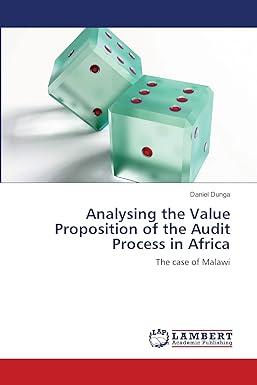Question
On January 1 of Year 1, Drum Line Airways issued $2,700,000 of par value bonds for $2,470,000. The bonds pay interest semiannually on January 1
| On January 1 of Year 1, Drum Line Airways issued $2,700,000 of par value bonds for $2,470,000. The bonds pay interest semiannually on January 1 and July 1. The contract rate of interest is 7% while the market rate of interest for similar bonds is 8%. The bond premium or discount is being amortized at a rate of $7,667 every six months. The company's December 31, Year 1 balance sheet should reflect total liabilities associated with the bond issue in the amount of: |
$3,009,166.
$2,579,834.
$2,390,834.
$2,485,334.
$2,914,666.
| On January 1 of Year 1, Drum Line Airways issued $3,955,000 of par value bonds for $3,408,000. The bonds pay interest semiannually on January 1 and July 1. The contract rate of interest is 7% while the market rate of interest for similar bonds is 8%. The bond premium or discount is being amortized using the straight-line method at a rate of $36,000 every 6 months. The life of these bonds is: |
15 years.
10 years
11 years.
7.6 years.
5 years.
| On January 1, a company issues bonds dated January 1 with a par value of $440,000. The bonds mature in 5 years. The contract rate is 11%, and interest is paid semiannually on June 30 and December 31. The market rate is 12% and the bonds are sold for $423,810. The journal entry to record the issuance of the bond is: |
Debit Cash $423,810; debit Premium on Bonds Payable $16,190; credit Bonds Payable $440,000.
Debit Bonds Payable $440,000; debit Interest Expense $16,190; credit Cash $456,190.
Debit Cash $423,810; credit Bonds Payable $423,810.
Debit Cash $440,000; debit Discount on Bonds Payable $16,190; credit Bonds Payable $456,190.
Debit Cash $423,810; debit Discount on Bonds Payable $16,190; credit Bonds Payable $440,000.
| On January 1, a company issues bonds dated January 1 with a par value of $370,000. The bonds mature in 5 years. The contract rate is 11%, and interest is paid semiannually on June 30 and December 31. The market rate is 12% and the bonds are sold for $356,386. The journal entry to record the first interest payment using straight-line amortization is: |
Debit Interest Payable $20,350.00; credit Cash $20,350.00.
Debit Interest Expense $21,711.40; credit Discount on Bonds Payable $1,361.40; credit Cash $20,350.00.
Debit Interest Expense $21,711.40; credit Premium on Bonds Payable $1,361.40; credit Cash $20,350.00.
Debit Interest Expense $20,350.00; credit Cash $20,350.00.
Debit Interest Expense $18,988.60; debit Discount on Bonds Payable $1,361.40; credit Cash $20,350.00.
| On January 1, a company issues bonds dated January 1 with a par value of $360,000. The bonds mature in 5 years. The contract rate is 9%, and interest is paid semiannually on June 30 and December 31. The market rate is 10% and the bonds are sold for $346,096. The journal entry to record the first interest payment using the effective interest method of amortization is: |
Debit Interest Expense $17,304.80; credit Discount on Bonds Payable $1,104.80; credit Cash $16,200.00.
Debit Interest Expense $17,304.80; credit Premium on Bonds Payable $1,104.80; credit Cash $16,200.00.
Debit Interest Expense $15,095.20; debit Premium on Bonds Payable $1,104.80; credit Cash $16,200.00.
Debit Interest Payable $16,200.00; credit Cash $16,200.00.
Debit Interest Expense $15,095.20; debit Discount on Bonds Payable $1,104.80; credit Cash $16,200.00.
| A company issues at par 8% bonds with a par value of $420,000 on April 1. The bonds pay interest semi-annually on January 1 and July 1. The cash received on July 1 by the bond holder(s) is: |
$5,600.
$22,400.
$28,000.
$11,200.
$16,800.
Step by Step Solution
There are 3 Steps involved in it
Step: 1

Get Instant Access to Expert-Tailored Solutions
See step-by-step solutions with expert insights and AI powered tools for academic success
Step: 2

Step: 3

Ace Your Homework with AI
Get the answers you need in no time with our AI-driven, step-by-step assistance
Get Started


